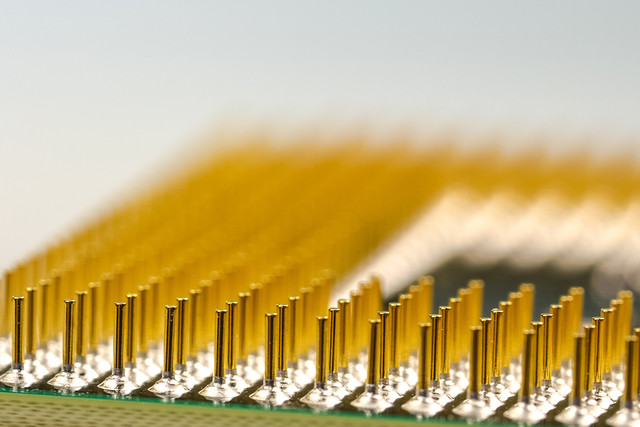What are bits?
The number of bits in a processor refers to the size of the data types that it handles and the size of its registry. Simply put, a 64-bit processor is more capable than a 32-bit processor because it can handle more data at once. A 64-bit processor is capable of storing more computational values, including memory addresses, which means it’s able to access over four billion times as much physical memory than a 32-bit processor.
The key difference: 32-bit processors are perfectly capable of handling a limited amount of RAM (in Windows, 4GB or less), and 64-bit processors are capable of utilizing much more. Of course, in order to achieve this, your operating system also needs to be designed to take advantage of the greater access to memory. This Microsoft page runs down memory limitations for multiple versions of Windows.
How many bits?
As a general rule, if you have under 4GB of RAM in your computer, you don’t need a 64-bit CPU, but if you have 4GB or more, you do. While many users may find that a 32-bit processor provides them with enough performance and memory access, applications that tend to use large amounts of memory may show vast improvements with the upgraded processor. Image and video editing software, 3D rendering utilities, and video games will make better use of a 64-bit architecture and operating system, especially if the machine has 8GB or even 16GB of RAM that can be divided among the applications that need it.
Through hardware emulation, it’s possible to run 32-bit software and operating systems on a machine with a 64-bit processor. The opposite isn’t true however, in that 32-bit processors cannot run software designed with 64-bit architecture in mind. This means if you want to take full advantage of your new processor you also need a new operating system, otherwise you won’t experience any marked benefits over the 32-bit version of your hardware.
Operating System Differences
With an increase in the availability of 64-bit processors and larger capacities of RAM, Microsoft and Apple both have upgraded versions of their operating systems that are designed to take full advantage of the new technology.
In the case of Microsoft Windows, the basic versions of the operating systems put software limitations on the amount of RAM that can be used by applications, but even in the ultimate and professional version of the operating system, 4GB is the maximum usable memory the 32-bit version can handle. While a 64-bit operating system can increase the capabilities of a processor drastically, the real jump in power comes from software designed with this architecture in mind.
Software and Drivers
Applications with high performance demands already take advantage of the increase in available memory, with companies releasing 64-bit versions of their programs. This is especially useful in programs that can store a lot of information for immediate access, like image editing software that opens multiple large files at the same time.
Video games are also uniquely equipped to take advantage of 64-bit processing and the increased memory that comes with it. Being able to handle more computations at once means more spaceships on screen without lagging and smoother performance from your graphics card, which doesn’t have to share memory with other processes anymore.
Most software is backwards compatible, allowing you to run applications that are 32-bit in a 64-bit environment without any extra work or issues. Virus protection software and drivers tend to be the exception to this rule, with hardware mostly requiring the proper version be installed in order to function correctly. […]
